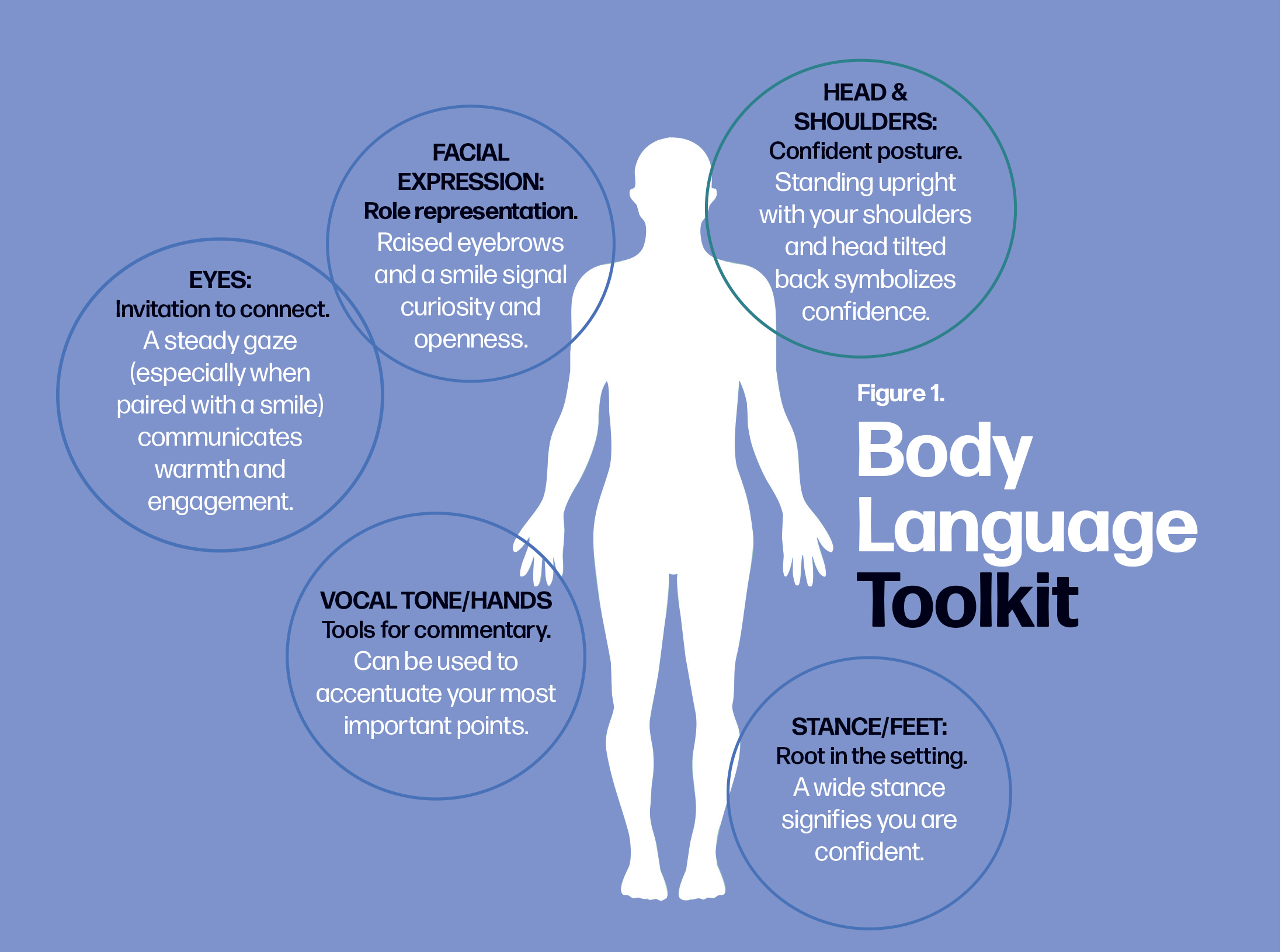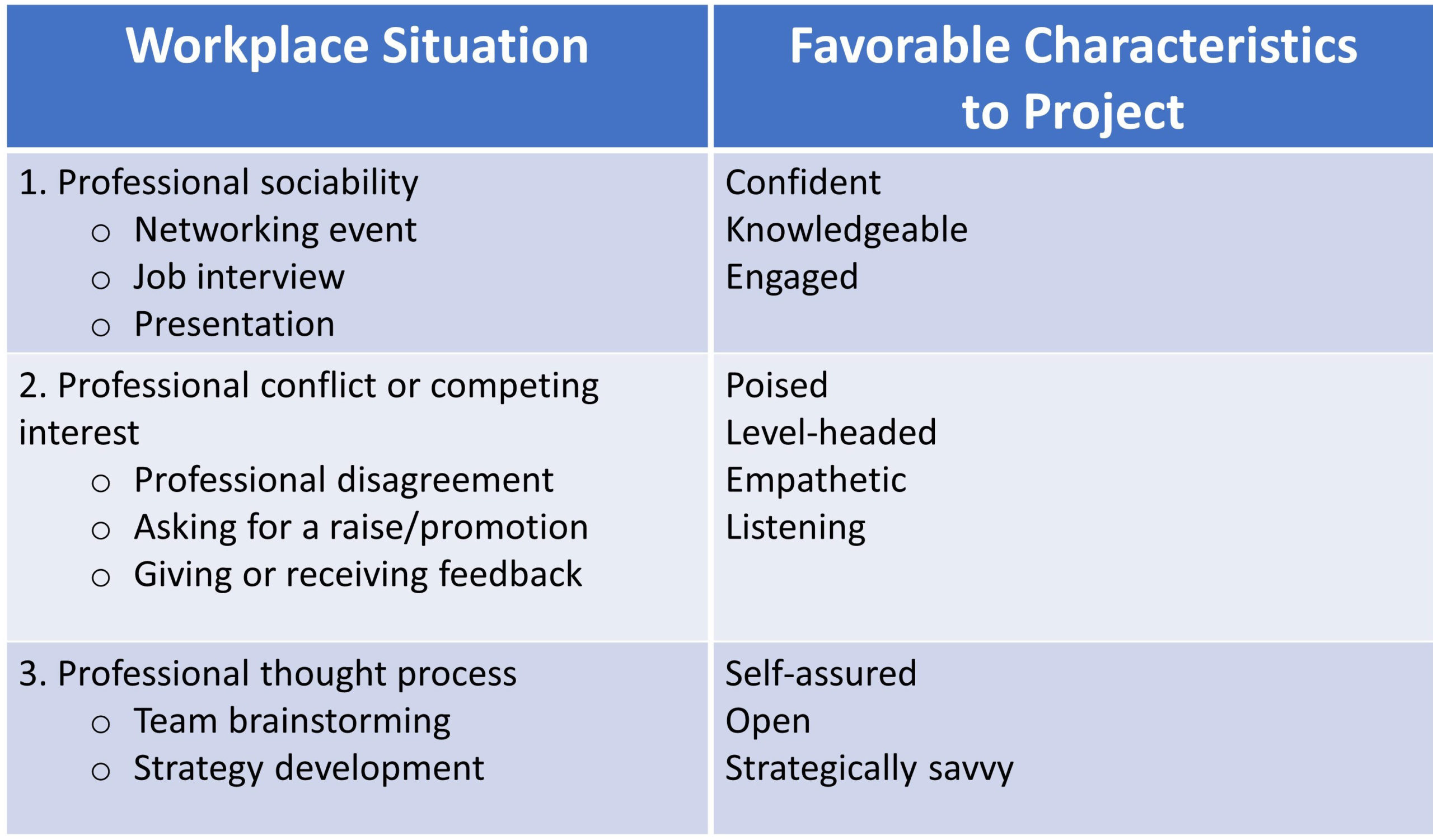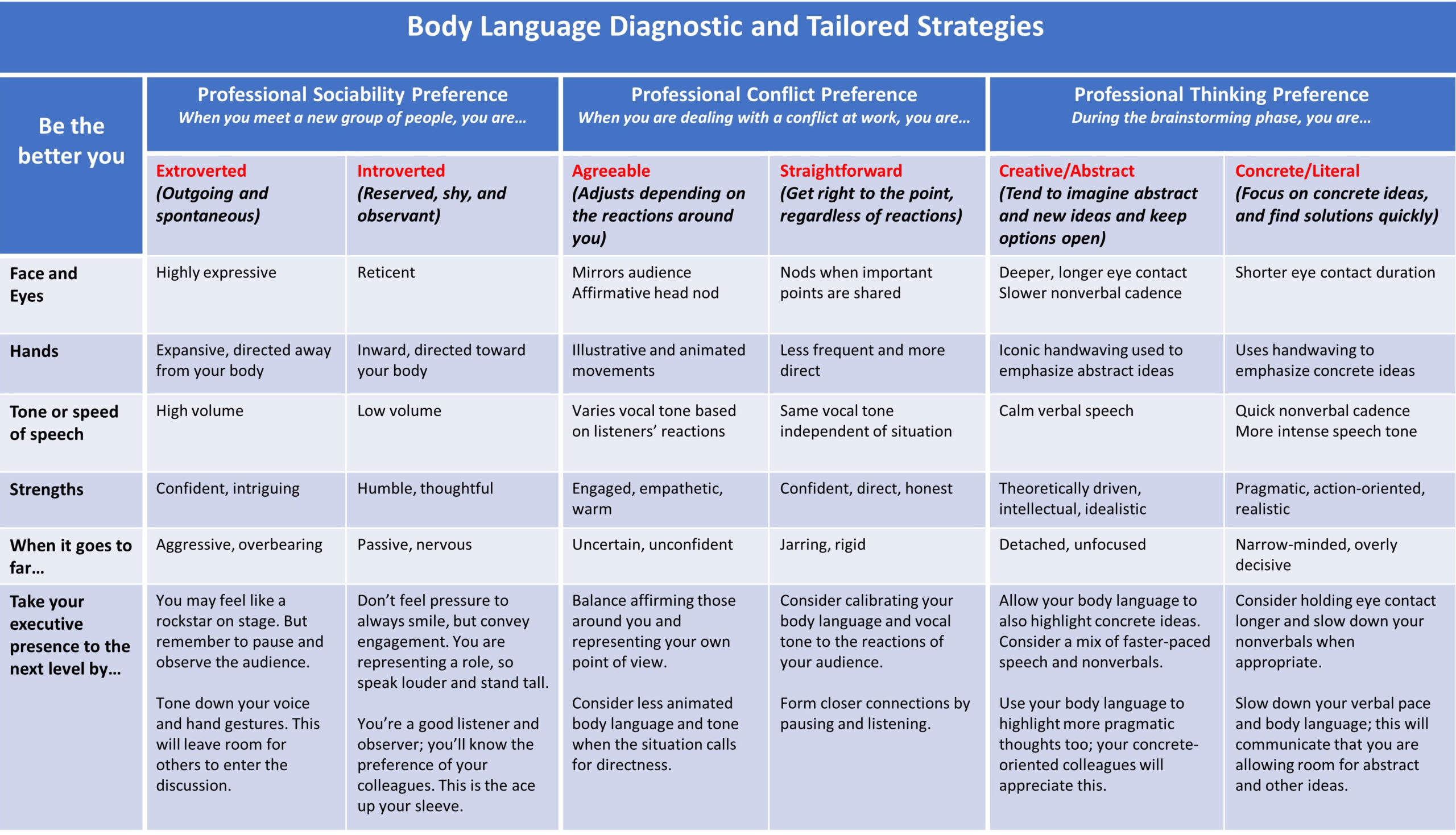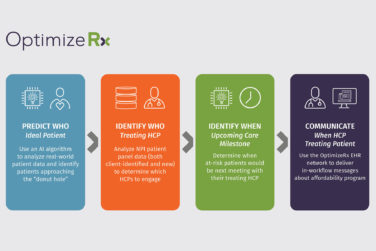Relationships drive the world of business. So how do you prepare to make the best impression in a business environment? You probably focus on what you will say. Well, that’s a good start—but research has found that 80% of communication is done nonverbally. With a simple toolkit, we can regain control of our body language and make the most of opportunities from job interviews to high-stake presentations.
Remember the adage “Actions speak louder than words”? Your body language is your vehicle for action. Now, let’s talk about how you can drive it to make your career thrive. Using the five-step process below, you can leverage your nonverbal communication into a competitive advantage.
Step 1: Understanding Our Body
Before we enhance our body language habits, we must first understand them. And there are quite a few. Consider each body language tool in Figure 1 below, including key tips on how to use them.
 Step 2: Outlining a Strategy
Step 2: Outlining a Strategy
After you’ve gained a greater understanding of your body language tools, you can tailor a strategy to specific scenarios. In Figure 2, we present a few workplace situations, corresponding communication strategies, and then invite you to consider how to pair the two using your body language toolkit.
 Since the most telling communication is done with your body, it’s important for your body language to match the message you want to communicate. Aligning your verbal communication with your body language doesn’t happen automatically—it’s a skill to be crafted. Consider your body as your toolkit; then select the tools that match the task at hand.
Since the most telling communication is done with your body, it’s important for your body language to match the message you want to communicate. Aligning your verbal communication with your body language doesn’t happen automatically—it’s a skill to be crafted. Consider your body as your toolkit; then select the tools that match the task at hand.
Step 3: Body Language Diagnostic—Learning Our Current Nonverbals
Psychological research has found that certain personality traits tend to emerge across cultures, and these personality traits tend to predict our nonverbals. For example, extroverted people tend to have very expressive nonverbals, including hand gestures directed away from their body, while those high in agreeableness often mirror the body language of others. The next step to mastering body language is to audit your current nonverbal status by identifying which personality type you align closest to, such as the ones outlined in Figure 3. The goal here is not to become someone you are not, but rather to refine your body language to represent your authentic self. When this is done well, charisma is born.
 Returning to the previously discussed workplace situations (Figure 2), consider how you tend to respond to each of them. Then use Figure 3 to increase awareness of how your current nonverbal habits are likely presenting.
Returning to the previously discussed workplace situations (Figure 2), consider how you tend to respond to each of them. Then use Figure 3 to increase awareness of how your current nonverbal habits are likely presenting.
Step 4: Strategic Development—Honing Future Nonverbals
The next step is to take ownership over your body language so that it’s congruent to the message you are attempting to communicate. Consider, again, the information presented in Figure 3. Although no single professional preference is better or worse, a telltale sign that someone is not in touch with the story their body is telling is when their nonverbals are signaling the characteristics described in “When it goes too far.”
For example, people high in agreeableness tend to use very affirming nonverbals when speaking with others, including mirroring the body language of others and speaking with high vocal inflection. Although this facilitates interpersonal connection, too much implies a lack of certainty and confidence. Our goal is to guide you towards what appears in the “Take your executive presence to the next level” section. To do this, consider the following tips:
- Practice makes perfect. Practice on a daily basis, even in nonwork environments with family and friends. The tools in your body language toolkit should be viewed like the toolkit in your garage. Take them out, dust them off, and practice using them. Before you know it, you’ll be an expert body language mechanic.
- Don’t dive into the whole toolbox—become familiar with one tool at a time. Imagine you’re not experienced with woodworking. Would you open your toolbox and immediately become an expert with every tool right away? It’s the same thing with your body language toolkit: becoming comfortable with your body language tools takes time. So, consider learning a single tool before moving on to the next.
- Ask for feedback. People are quite astute at reading the body language of others. Consider asking a few trusted coworkers to give you feedback on your nonverbal impressions at work.
- Hire a coach. Adjusting your nonverbals may be harder for some people. View your body language toolkit like tools you’d use for a woodworking craft. Not everyone is a natural carpenter—and that’s okay! You might just need an apprenticeship. Thankfully, there are organizational psychologists who are body language experts. Consider hiring one to coach you.
- Don’t try to be someone you’re not. Remember to simply tweak your body language, not put on a mask. For example, don’t feel pressure to hold a smile throughout the duration of your meetings if this doesn’t feel natural to you. When you over-engineer your nonverbals, it takes away from your mental bandwidth and may cause you to appear inauthentic.
Step 4b: Strategic Development—Reading the Body Language of Others
Reexamine Figure 3 and notice the body language of the personality preferences that don’t describe you. Consider these tips when you notice that someone’s body language style is different from yours:
- Don’t assume disagreement. People express themselves differently, and this includes their nonverbals. If you need momentary reassurance, consider pausing and asking for their perspective. You may be surprised to find they were in agreement the whole time.
- Speak their language. For example, if you notice body language of the “Creative/Abstract” preference, consider a communication style that emphasizes abstract ideas. If you notice body language of the “Concrete/Literal” preference, focus on the actionability and the practical side of your message. They’ll be more likely to resonate with it.
Step 5: Execution—Connecting, Reflecting, and Celebrating
By this point, you’ve become familiar with the body language toolkit and strategically developed how to craft your nonverbals. Now it’s time to execute. Whether it’s a job interview, a keynote speech, or just the next strategy development meeting, remember: your body language is simply a medium through which you connect with others. So make sure you are at ease in your environment.
Now, relax and connect.
After the event, take a moment to reflect—what went differently this time? Is there anything you want to do more or less of? This is a great time to ask for feedback from colleagues. Honing your professional body language isn’t easy. It takes time. Consider that most people don’t invest time into learning the nuances of nonverbal communication. You have, and this puts you way ahead of the game.










